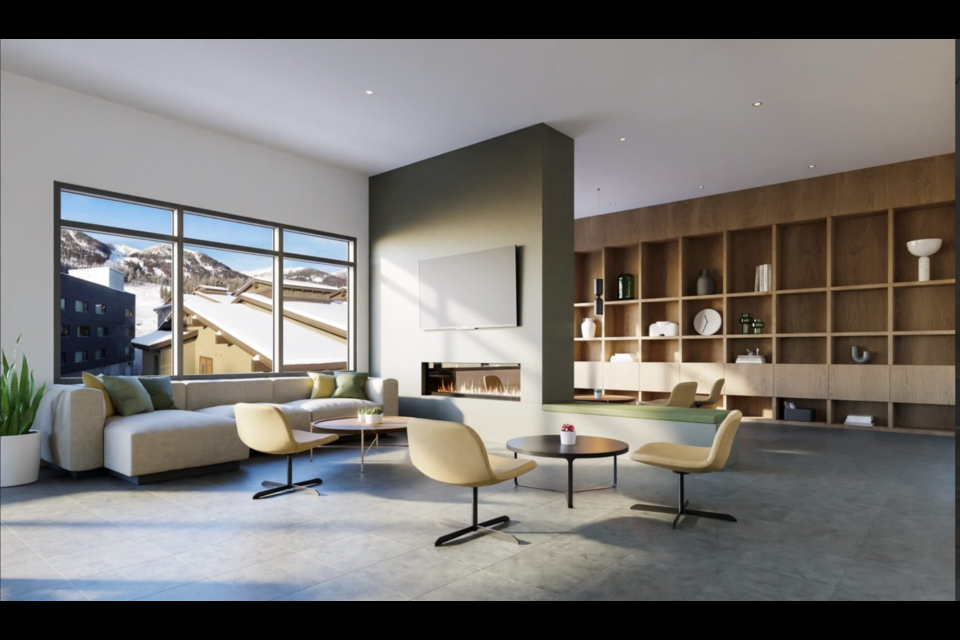An exodus from larger urban centres fuelled a boom in rural properties, and ski resorts were no exception.
Close to 750 new residents called Big White home in the 2021 census versus 2016, a shift Vicki Gee, a director with the Regional District of Kootenay Boundary, says occurred largely during the pandemic.
“Some people moved to Big White just in the initial scare of COVID, wanting not to be in an urban area, then they were working from there and thought, ‘Oh, we can just stay here,’” she said.
And the influx continued, with building permit values at Big White rising to $21.7 million last year, a 352 per cent increase.
It’s a similar situation in Rossland, home to Red Mountain Resort. The population increased by 11 per cent in 2021 versus 2016, driven largely by families with young children. Grade 1 classes in the local school have increased from one to four as families sought a rural lifestyle with proximity to skiing.
Many of the homes underway at Big White are more than a chalet, says Jesse East, a broker with Re/Max Kelowna focused on Big White. Many are in excess of 10,000 square feet. Two townhouse projects are also being built, but even their cost – $2.7 million – isn’t reflecting the slowdown seen elsewhere in the market.
“The people who are building most of the single-family stuff up there right now are the people who are unaffected by price changes,” East says. “There’s some massive homes, and I don’t think there’s any worry about money.”
People are still coming in and, if they don’t like what they see, trading up to a million-dollar condo from something half the price.
“It’s a lifestyle decision,” he said. “Our average price for September-October in 2019 was $425,000. Our average price for this year at the same time was just under $543,000.”
Strong demand is supporting fresh investment in Red Mountain, where CEO Howard Katkov launched The Crescent, a 102-unit residential project that saw 70 per cent of units sell within the first month It’s now 80 per cent sold, in a community with no standing inventory.
“That’s probably the biggest condominium project ever built in the southeastern Kootenays, ever,” Katkov said.
The project has achieved prices in excess of $1,000 a square foot, underscoring demand for contemporary units – a mix of studios, lofts and townhomes – in the region.
Prices started at $350,000, attracting U.S. buyers. Close to 60 per cent of units sold to Americans, who make up just 30 per cent of Red Mountain visitors.
“The way the dollar is today, it really resonated,” he said.
While a two-year federal ban on foreign buyers takes effect Jan. 1, 2023, it doesn’t affect buyers who signed contracts prior to that date. The government has also indicated that residences outside a major metropolitan centre, including recreational properties, will be exempt. (The regulations have yet to be published.)
Katkov doesn’t expect the ban to have a significant impact on sales to foreign buyers, good news as ski hills look to a post-pandemic future.
Prior to the pandemic, ski hill visitation in Western Canada peaked at 9.4 million visits, with 6.8 million of those from B.C. Domestic traffic rebounded strongly last year, with B.C. hills reporting 5.4 million visitors. Christopher Nicolson, CEO of the Canada West Ski Areas Association in Kelowna, expects another strong year with international borders once again open.
In addition to new residential construction at Big White and in Rossland, Panorama Mountain Resort has relaunched The Approach, a renovated 104-unit hotel. Red Mountain is also set to open a new 90-seat lodge adjacent to the Topping Creek chairlift when the hill opens for the season.
Several hills have also invested in new or expanded lift capabilities that expand access to terrain. The Creekside gondola in Whistler, for example, increases uphill capacity by 35 per cent. At Revelstoke Mountain Resort, work is expanding beginner terrain and new surface lift is planned for the 2023-24 season.
The investments for beginners and families promise to support a new generation of ski enthusiasts, and the ongoing evolution of the sector.
“People felt safer in an outdoor environment, and a lot of people picked up skiing and snowboarding,” Nicolson said of industry growth during the pandemic. “The past couple of years have seen a lot of new Canadians get outside and take up skiing and snowboarding at unprecedented levels.”



